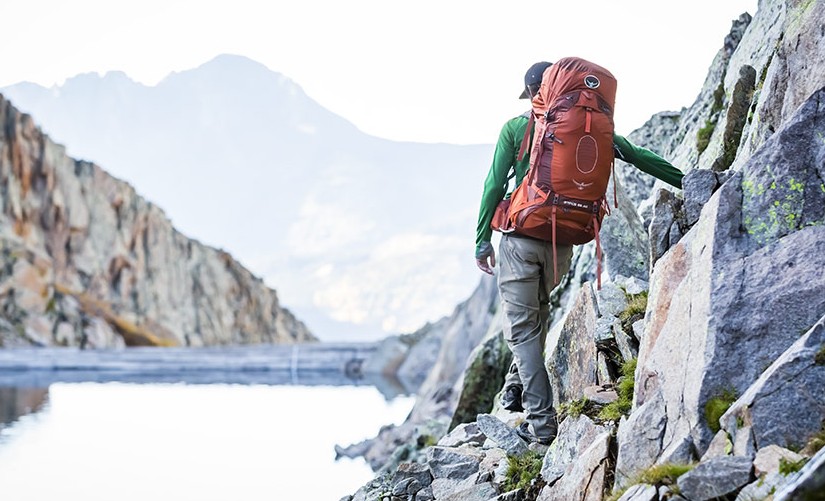Backpack [bak-pak]
Verb (used without object): to go on a hike, using a backpack.
It has been said that this guy to the right, Giovanni Francesco Gemelli Careri, was one of the world’s first backpackers.

When Giovanni decided to interrupt his law career to travel the world for five years in 1693, chances are he wore a backpack. That backpack probably consisted of a knapsack with two shoulder straps.
Today, the key to having a successful backpacking trip depends on two things:
- Keeping your pack weight light.
- Using a backpack that distributes weight onto the human skeletal system making the backpack feel like it is a part of you, rather than an extra burden to carry.
Ancient knapsacks became metal external frame packs, which developed into modern internal frame packs as backpack companies constantly improve over yesterday’s technology. They spend ton’s of money in research and field testing to create innovative suspension systems that help the pack become a part of you.
Last year Osprey released the most innovative tech for backpacking packs: AG (anti-gravity). This helped them win Backpacker Magazine’s coveted Editor’s Choice Award in 2015.
Backpacks help transfer the load of the pack onto the human skeletal system by using straps that tighten around the body, pulling the pack closer to you. This creates points of pressure that are commonly cushioned by foam. Osprey’s AG packs have replaced pressure points with air. Seriously.
How it works:

A suspended lightweight mesh runs from the top of the pack to the hip belt, and is backed by air, not cushions. The benefit here is having better weight distribution that spans across a larger area, relieving stress from the hips and shoulders and dispersing it across the entire back.
Another benefit of the mesh is its ability to conform to your body in a way foam can’t match, like sleeping on a hammock rather than a mattress. The AG suspension allows you to bend over, lean back, rock crawl, and more while keeping the pack conformed to your body for ease of movement.
When packs use foam, the thickness of each foam piece depends on its location, generally causing discomfort when they intersect, specifically when the thick lumbar pad intersects with the hep belts (less thick). This intersection creates a seam. AG hip belts and back panels are entirely seamless, lessening the chances of fit issues.
Shop Osprey
The Osprey All Mighty Guarantee:
Durability is very important to anyone who takes backpacking seriously. Osprey is known to make backs that can be put through the ringer and last many years. The AG packs went through one year of testing before they hit the market last year, and those samples have now gone through one more year of use. So far, the packs hold up to Osprey’s high standard.
Osprey’s confidence in their packs is backed by their All Mighty Guarantee that states:
“Osprey will repair any damage or defect for any reason free of charge – whether it was purchased in 1974 or yesterday. If we are unable to perform a functional repair on your pack, we will happily replace it. We proudly stand behind this guarantee, so much so that it bears the signature of company founder and head designer, Mike Pfotenhauer.”
If Giovanni were alive today, we’re confident he’d travel with an AG pack from Osprey.
